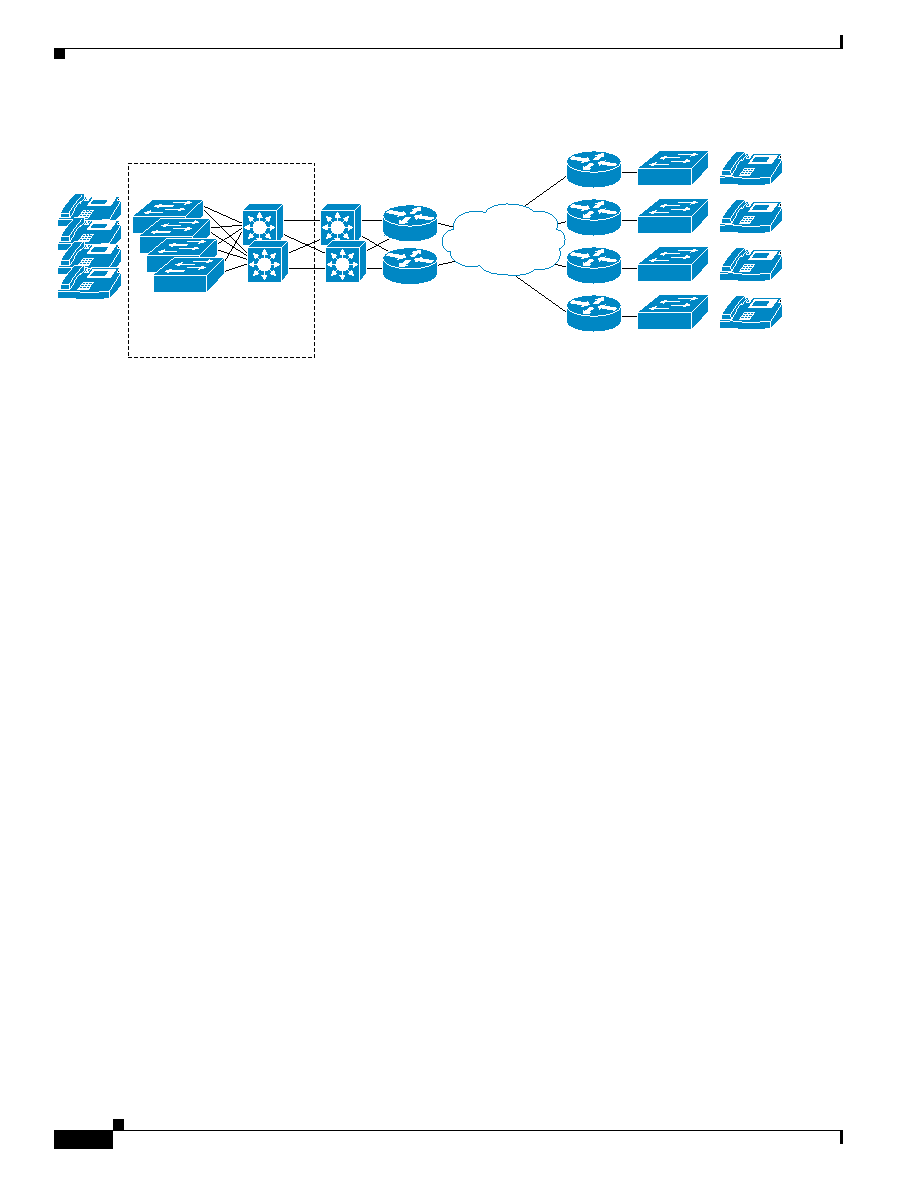
time required for LAN interfaces to serialize the bits of packets onto the physical media is negligible; it
is not significant enough to affect delay-sensitive applications. Additionally in LANs, propagation delay
is of little concern because LANs by their very nature are not geographically dispersed.
sections). This can adversely affect voice and video quality by introducing packet loss through jitter
buffer over-runs and under-runs.
congestion can happen if a rate change occurs or if many interfaces are aggregated into a single uplink,
resulting in an oversubscription of the uplink's capacity to buffer packets.
switches at different rates depending on the link speed of the physical interfaces they are traversing.
When traffic serializes into a campus switch at gigabit speeds and is switched to a one hundred megabit
interface, the switch must have buffering capabilities in order to hold, or queue, the bits while it waits
to transmit them. When a transmit buffer fills, ingress interfaces are not able to place new traffic into
the transmit buffer of the target interface. When the switch cannot place a packet into the transmit queue
because of TX buffer congestion/exhaustion, packet drops will occur (as shown in